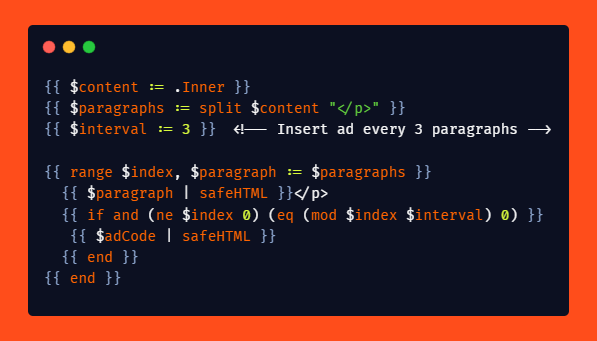The Most Powerful GPT?
Over the years, language models have undergone significant advancements, revolutionizing the field of natural language processing (NLP).
Among the notable milestones in this domain are the series of Generative Pre-trained Transformer (GPT) models developed by various organizations.
These models have demonstrated remarkable capabilities in tasks such as text generation, comprehension, and language understanding.
From the groundbreaking GPT-2 to the latest GPT-4, these models have continually pushed the boundaries of what is possible in the realm of AI-driven language processing.
With their vast number of parameters and sophisticated architectures, GPT models have become powerful tools for applications ranging from chatbots and virtual assistants to content generation and machine translation.
In this article, we will explore the most powerful GPT model currently available, GPT-4, developed by OpenAI.
We will dive into its capabilities, compare it with other notable GPT models, and discuss the future prospects of this exciting technology.
Table of Contents
GPT-4
GPT-4, the latest iteration in the GPT series, has emerged as the most powerful GPT model to date.
Developed by OpenAI, GPT-4 boasts an impressive 170 trillion parameters, a substantial leap from its predecessor GPT-3, which had 175 billion parameters.
This tremendous increase in parameters enables GPT-4 to generate even more complex, accurate, and contextually aware text.
Capabilities of GPT-4
GPT-4 possesses a wide range of capabilities that make it a remarkable language model. Let’s look at some of its key features:
- Generating Human-Quality Text: GPT-4 excels at generating human-like text across various domains, including poems, code snippets, scripts, musical pieces, emails, and letters.
The model’s ability to mimic human language is truly remarkable. - Informative Question Answering: GPT-4 can provide informative and detailed answers to a wide array of questions.
Whether the questions are open-ended, challenging, or even unusual, GPT-4 can comprehend and respond in an accurate and informative manner. - Language Translation and Creative Writing: Language translation and creative writing are areas where GPT-4 shines.
It can effortlessly translate between languages and produce different types of creative content, catering to the needs of diverse users. - Versatile Applications: GPT-4 finds utility in various tasks, including machine translation, text summarization, and question answering.
Its versatility makes it an indispensable tool for a wide range of industries and applications.
While GPT-4 showcases immense potential, it is crucial to exercise caution and be aware of the potential risks associated with its usage.
Notable GPT Models
Apart from GPT-4, several other GPT models have garnered attention in the AI community due to their impressive capabilities.
Let’s take a brief look at a few of these models:
GPT-3: The Predecessor
GPT-3, the predecessor of GPT-4, remains a highly powerful language model. With 175 billion parameters, GPT-3 has already demonstrated its ability to generate high-quality text and perform a range of language-related tasks effectively.
Gopher: Google’s Language Model
Developed by Google AI, Gopher is a large language model with 280 billion parameters. Gopher is touted for its accuracy and is considered more precise than GPT-3.
It showcases Google’s commitment to advancing language models in the field of artificial intelligence.
Chinchilla: DeepMind’s Impressive Model
Chinchilla, developed by DeepMind, takes the concept of GPT models to the next level. With a staggering 1.3 trillion parameters, Chinchilla is considered even more accurate and powerful than Gopher.
DeepMind’s contribution to the field of language models showcases their commitment to pushing the boundaries of AI research and development.
GPT-Neo: OpenAI’s Community Project
GPT-Neo is a series of community-driven language models developed by EleutherAI, an independent research organization.
These models are based on OpenAI’s GPT architecture and come in various sizes, with the largest version, GPT-Neo 2.7, having 1.3 trillion parameters.
GPT-Neo highlights the collaborative efforts and open-source nature of AI development, allowing researchers and enthusiasts to contribute to and improve the capabilities of the models.
Future Prospects of GPT Models
The continuous advancements in GPT models pave the way for exciting possibilities in the field of artificial intelligence. Here are a few future prospects:
Enhanced Language Understanding and Generation
As GPT models evolve, we can expect significant improvements in language understanding and generation.
Models like GPT-4 and beyond will likely exhibit a deeper understanding of context, nuances, and subtleties in human language, enabling them to generate more coherent and contextually relevant text.
Domain-Specific Expertise
Future iterations of GPT models might incorporate domain-specific knowledge and expertise.
This could involve training models on specialized datasets to make them more proficient in generating accurate and knowledgeable text in specific fields like medicine, law, or finance.
Ethical Considerations and Bias Mitigation
As GPT models become more powerful and widely used, addressing ethical considerations and mitigating bias will be of paramount importance.
Efforts should be made to ensure fairness, transparency, and accountability in language models to avoid perpetuating biases and misinformation.
Multimodal Capabilities
Integrating multimodal capabilities into GPT models can open new avenues for creative expression and interaction.
Combining text with other modalities like images (though GPT-4 is capable of generating images), videos, and audio could enable GPT models to generate richer and more immersive content.
Wrap Up
GPT-4 stands as the most powerful GPT model currently available, showcasing impressive advancements in natural language processing and generation.
With its unprecedented number of parameters, GPT-4 offers enhanced text generation capabilities and excels in various language-related tasks.
However, it’s important to note that other notable models like GPT-3, Gopher, Chinchilla, and GPT-Neo also contribute significantly to the field.
Looking ahead, the future prospects of GPT models hold tremendous potential.
From improved language understanding and domain-specific expertise to ethical considerations and multimodal capabilities, these models will continue to push the boundaries of AI and revolutionize how we interact with and generate text.
As researchers and developers continue to refine and innovate, we can expect even more powerful and versatile language models in the years to come.
FAQs:
-
What is GPT? GPT stands for Generative Pre-trained Transformer. It is a large language model that has been trained on an extensive dataset of text and code. GPT models are capable of generating text, translating languages, creating various types of creative content, and providing informative answers to questions.
-
Which GPT model is currently the most powerful? Currently, the most powerful GPT model is GPT-4. With its 170 trillion parameters, it surpasses GPT-3, which has 175 billion parameters.
GPT-4’s increased parameter count enhances its power and enables it to generate more complex and accurate text. -
What are other notable powerful GPT models? Some other powerful GPT models include:
- GPT-3
- Gopher
- Chinchilla
-
What are the advantages of using GPT models? GPT models offer various benefits, including:
- Text generation
- Language translation
- Creation of diverse creative content
- Providing informative answers to questions As GPT models continue to evolve, they have the potential to revolutionize human-computer interaction.
-
What are the risks associated with using GPT models? One risk of using GPT models is their potential misuse for generating fake news or creating deepfakes.
Responsible use of GPT models and awareness of their risks are important considerations. -
What does the future hold for GPT models? Ongoing research suggests that future GPT models will likely become even more powerful and capable. These advancements can profoundly impact human-computer interaction and communication methods.





